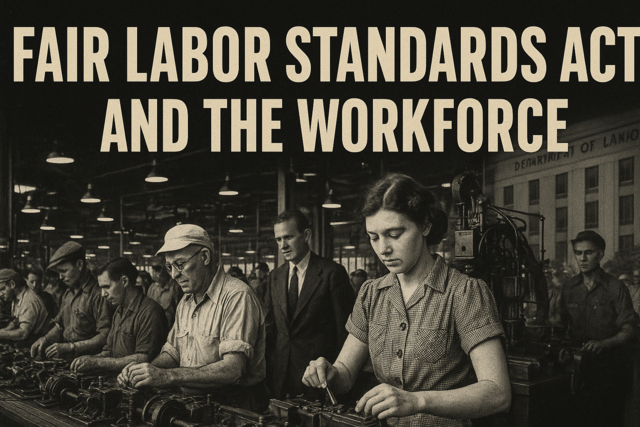This definition of change management can involve an approach or way to transition or change the way organizations, teams, and individuals use resources such as processes and budgets. The consultant can help change an entire organization to make it more effective and efficient. The consultant can do this my looking at changes to both the organization and the individuals in the organization.
The consultant can focus on how during an organizational transition teams and the people in the teams change and are affected. The consultant can advise and provide information about business and process solutions, information technology, and behavior – we can go one and on with this list. The consultant can also advise and provide information about project management during an organizational transition.
Consultants can also point out that people who are affected by change can fall into categories such as innovators, early adopters, early majority, late majority, and laggards.
Change management models and change management as a concept have existed since the 1980s. The theories and practices associated with change management grew in the 1990s partly in response to innovations in technology. People and organizations had to adapt and adopt change to be competitive.
In through the 2000s up to today change management theories involved whether top down was a good way to implement change. Change management also involved concepts such as Lean and Agile. Consultants have been involved in advising on these techniques.
HOW CONSULTANTS CAN APPROACH CHANGE MANAGEMENT
Consultants can begin by looking at the reason for change. Is it because of new and emerging technologies and globalization? We have seen in recent years the growth of mobile applications and social media in various industries. Individuals within organizations needed to change to keep up with these technologies.
People and organizations must be comfortable with change. The consultant can help as some organizations struggle. The culture may not facilitate needed change. There can also be problems with organizational structure that does not facilitate change.
Organizations that can change can have a competitive edge, as with companies that are able to work with mobile applications and other new technologies. Companies that refuse to change can lose market share and find profits dropping.
Consultants can remind an organization that change can impact employee morale and affect all employees and departments.
METHODS OF CHANGE MANAGEMENT – HOW TO
Consultants can advise on methods of change management and what would best fit an organization. We cover some two approaches in the following.
The Change Management Foundation has a model that includes project management that handles people implementing change. It includes four stages:
1. Determine Need for Change
2. Prepare & Plan for Change
3. Implement the Change
4. Sustain the Change
The PDCA Cycle is based on the work of Edwards Deming and include Plan-Do-Check-Act. Here the focus is on improving processes and products. Here are the four stages:
1. Plan and establish processes and objectives
2. Do and implement the plan
3. Check and compare the actual and expected results
4. Act and use the new process throughout the organization
Many factors can go into determining which approach will work best. That is where the consultant comes in. The consultant can help the client look at which approach will best fit the culture and leadership goals.
A CLOSER LOOK AT THE KOTTER MODEL AND HOW TO
Let's look more closely at Kotter's well-known change model, developed in the mid 1990s. You could use this as how-to information if you are a consultant. This model helps create support and buy in from those involved. Remember that this can help with implementing new technologies, new initiatives, and new project-based work. You can use this as a system wide change or to change a process or two. Here are the detailed steps.
Create urgency
This first step lays the foundation you need for success. What helps is that the whole organization wants to change and recognizes a need for change. This goes beyond showing data or statistics. It is about communication that is convincing and honest. You should explain about market pressures and the competition. Ideally, people will talk about the change and help set up success for the change. During this step you can ask outside stakeholders and industry people to explain why change will bring a good result. Customers can also help.
If leadership buys into the change this will help. This can take time but it is time well spent. Once leadership or most of it gains enthusiasm the rest of those involved will more likely also buy into the idea that change will be good.
Form a Powerful Coalition
During this second step to further lay the foundation for effective change those who are convinced the change will be for the better can lead and explain and sustain the sense of urgency and need. This leadership can come from teams, influential individuals, and a variety of levels within the organization.
Having a good mix of people can help. These people can reflect not just the hierarchy of the organization but leaders throughout and at all level.
Create a Vision for Change
During this third step you should develop a unifying vision that ties together ideas. This vision is one that individuals can understand. Once people understand the vision the buy in and cooperation needed for change can come more readily. This can be one or two sentences. It is also something that you should communicate throughout the organization and with the coalitions and teams already involved in creating urgency.
Communicate the Vision
During this fourth step you lay even more of the foundation for success. Here you must clearly communicate the vision frequently and effectively. Keep the vision in the minds of those in the organization. Make sure people understand and remember the vision. If you see concern, address the concerns.
Remove Obstacles
During this fifth step you will ideally find that people want to achieve what you have been promoting. If you identify an obstacle remove it now. Continue to check for and remove obstacles. You can hire change leaders to help. Reward those who are supporting the vision.
Create Short-Term Wins
During this sixth step you can create targets that are short term and do-able. As you get wins you can reward those involved. Instead of long term goal create smaller goals that can move you incrementally to the end result. Pick wins that have a high probability of success.
Build on the Change
During this seventh step do not rest with quick wins only. Keep change going continually and achieve long-term change. Keep looking for improvements and continuous wins. Continuously bring in new change agents and new ideas.
Anchor the Changes in Corporate Culture
During this eighth and final step make the change part of the culture. Keep continuous change part of the culture. Make sure leaders continue to support the changes. Communicate about success stories.
HELPING MANAGE THE PROCESS OF CHANGE
A consultant can point out that for change to be successful these factors are important.
-
All employees should be included at all levels.
-
Buy in at all levels is critical.
Here are the steps a consultant can recommend to implement change.
1. Determine what change is needed for the business based on evaluation of the current situation
2. Adjust the thinking of leadership
3. Train employees on the change
4. Get support for the change using effective marketing and communication
The consultant can develop a change management plan using this approach.
1. Determine problems and the need for change.
2. Determine the capability of the organization for change.
3. Document in the plan objectives and processes for change.
Here are more techniques the consultant can use to help the client.
1. Advise on marketing of the change to employees.
2. Advise on communication of the change throughout the organization.
3. Advise on working with leadership on style changes.
4. Align the expectations of groups within the organization.
5. Integrate teams and training.
The consultant can also advise on the use of metrics that include leadership buy in, communication effectiveness, financial impact, efficiency of operations, and identification of opportunities for improvement.
HOW TO ON SUCCESSFUL CHANGE MANAGEMENT
The consultant can point out the following are important to successful change management.
1. Create a business case for change
2. Define goals and objectives
3. Monitor risks
4. Monitor costs
5. Determine the return on investment
6. Evaluate cultural issues
7. Communicate clearly the reason for change, benefits, and details of change
8. Use effective education and training
9. Update skills as needed
10. Anticipate resistance and plan on how to overcome it
HELPING AN INTERNAL CONSULTANT
Internal consultants can play a role in implementing organizational change. They can get involved in project management support and other activities that involve project implementation. An internal consultant advises clients within an organization. The advice can include:
-
Information about how to improve performance
-
How to work within a corporate structure to solve problems and improve processes
-
How to serve as a coach and educator
-
How to work as a facilitator
The internal consultant can work on change management in groups such as IT, finance, human resources, training and development, quality management, planning, safety, and environmental services.
External consultants can also work with an internal consultant to bring in specialized knowledge on change management or other topics. Organizations may also have internal consultants who do not have that job title but function in that capacity. Some of the skills of these consultants include:
1. Knowledge of the organization and industry
2. Expertise on planning
3. Expertise on performance measurement
4. Knowledge of process management
5. Knowledge of quality management and Six Sigma
6. Knowledge of organizational development and effectiveness
Other factors to success during change management includes:
1. Culture and staffing
2. Contracting processes
3. Client relationship management
4. Metrics on learning, innovation, and budgets
5. Metrics on skill building
Consultants can also determine elements of effective leadership and include communication, developing others, team building, decision making skills, managing collaboration across business units, and strategic business elements.
WHERE CONSULTING IS GROWING
Internal consulting is growing as groups try to get a value from advice from a consultant. This involves also the acceptance on the part of management that technology changes happen often and organizations must keep up with the changes. Thus consulting for change management using internal consultants is growing.
Internal consultants also work with external consultant on contracts. The external consultant can be a big help by supplementing when needed.
WAYS CONSULTANTS SUPPORT CHANGE MANAGEMENT
Two ways a consultant can support change management is to have a team own the change management or to have a consultant own the change management. The consultant can be part of the team or develop their own team. The consultant's role is to:
1. Educate on how to develop change management
2. Develop plans
3. Develop strategies
4. Enable those implementing the change
Consultants both internal and external should also stress the importance of communication. Here are two important considerations.
1. Employees want to know why change is coming. Leaders should explain the business reasons for the change and why it is happening now.
2. Employees want to how change will impact them. Supervisors should explain how day to day work will change for each employee. Hearing this from a human resource person or project leader typically is not as effective as having the supervisor explain the impact.
Consultants can help with good communication if they:
1. Help leadership deliver messages effectively
2. Explain who should deliver messages
3. Explain what the content should be
4. Segment audience as needed
5. Create presentations
CONCLUSION
We have now looked at ways a consultant can help an organization with change management. We covered topics such as methods, models, approaches, helping internal staff, and where consulting is growing.






























